Protect your wax
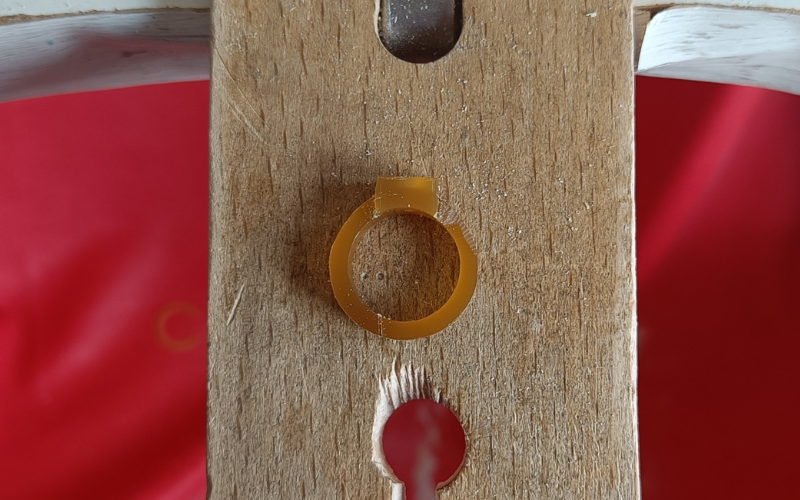
Tools
Our tools are big! It’s easy to forget a sawblade is 7 cm long when you’re intensely focused on using just 1 cm of it. Just because you’re only using 1 cm doesn’t mean the other 6 cm’s stop working! While you’re watching that 1 cm, the other 6 are piercing a part of your wax you don’t want pierced.
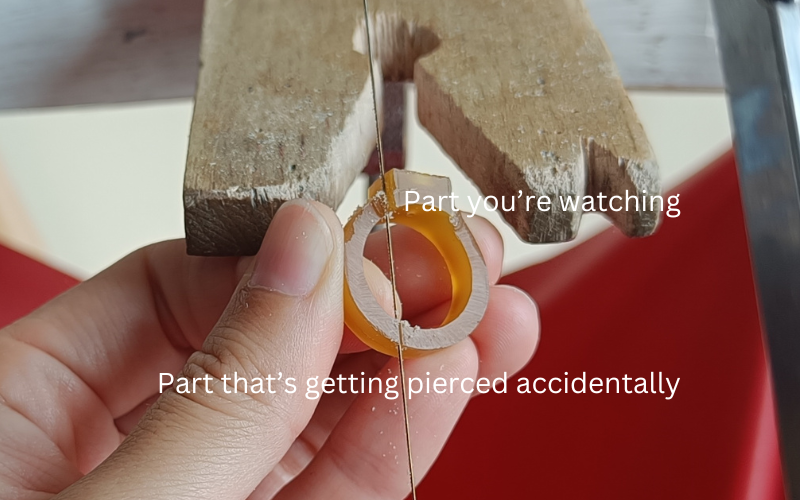
And that’s only considering the active part of a tool. The not active parts of a tool can damage your wax as well. A ball burr is small enough to watch completely, but the chuck also spins and can take a chunk out of your wax!
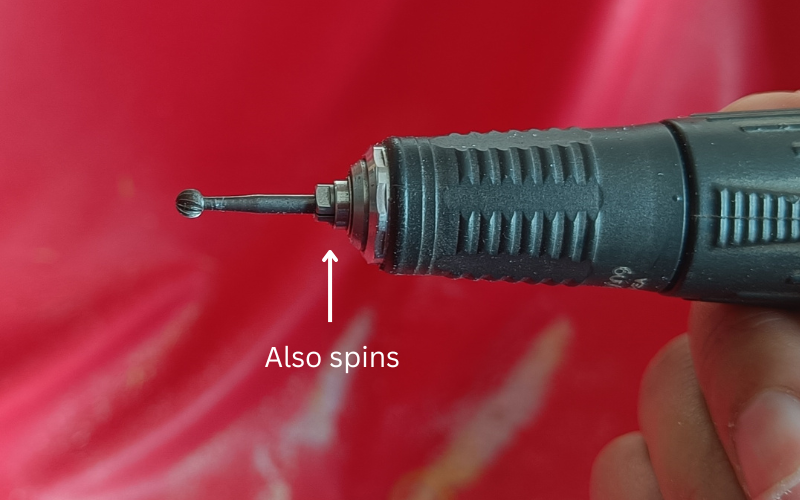
The not blade side of a stanley knife is still sharp enough to cut into wax.
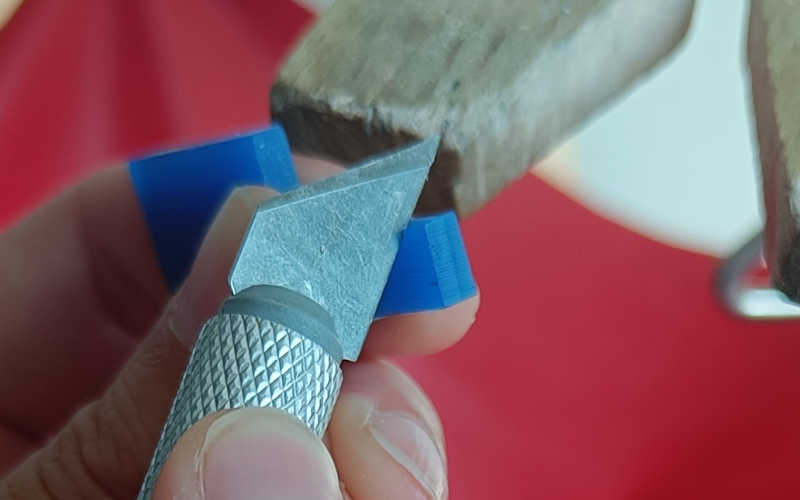
The entire metal part of a heating pen heats up, not just the tip
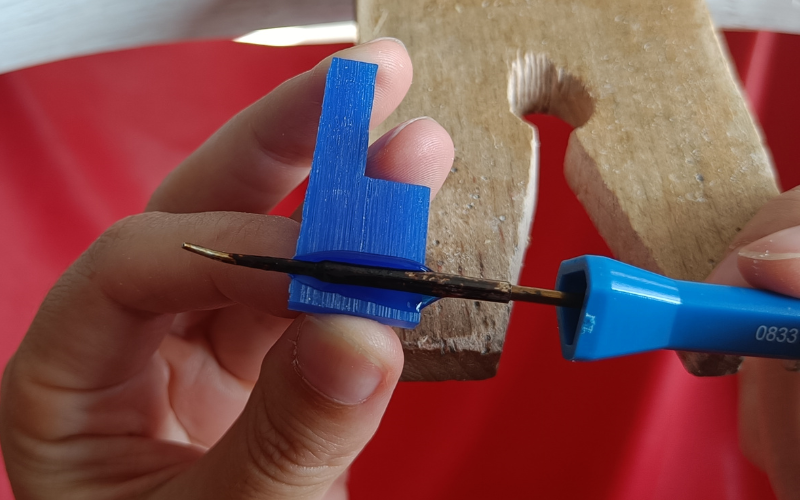
And what about the times you’re doing everything right and you just slip with a tool?
Angle your tools
The quickest and easiest way to not accidentally damage your piece, is by angling your tool away from it.
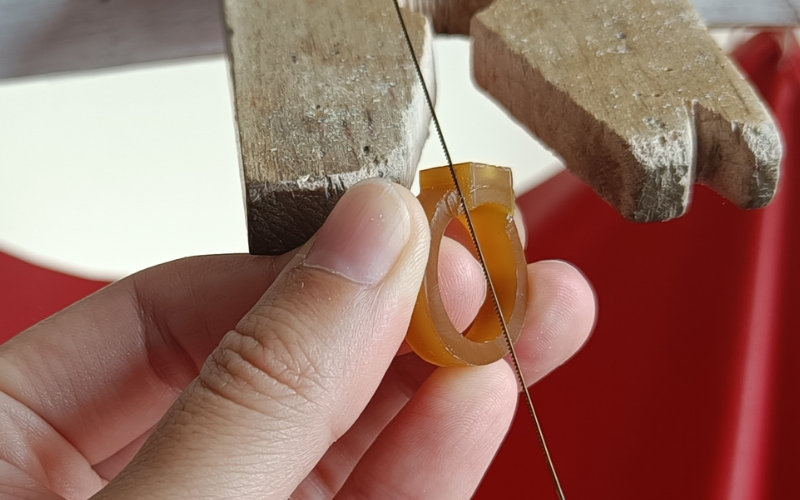
This is easier said than done. You can start out angling your tool, but the longer you work the more you have to rotate and change the way you hold your piece. Every time you change the way you hold your piece you have to reangle your tool away.
And after a while you just forget. You change the way you hold your piece for the 10th time and you forget to angle your tool. Or you’re so focussed because it's almost done and your tool goes from angled to no longer angled. No need to pretend, it happens to all of us!
You can start out by just angling your tools away. But the more detailed you get it becomes dangerous to only rely on angling your tools.
Tape
You can put a little bit of tape on the opposite side of what you’re working on. This works well for rings.
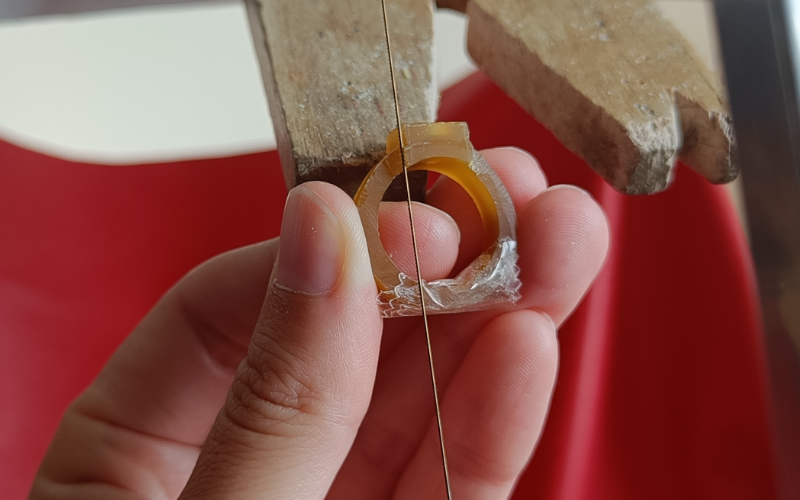
You feel it when you hit the tape with your tool and it reminds you to angle it away. Tape doesn’t prevent you from damaging your piece. You will pierce/file/burr your way through tape if you keep going. The tape is a reminder you need to angle your tool away.
You can also tape the part of your tool you’re not using. This works well for stanley knives.
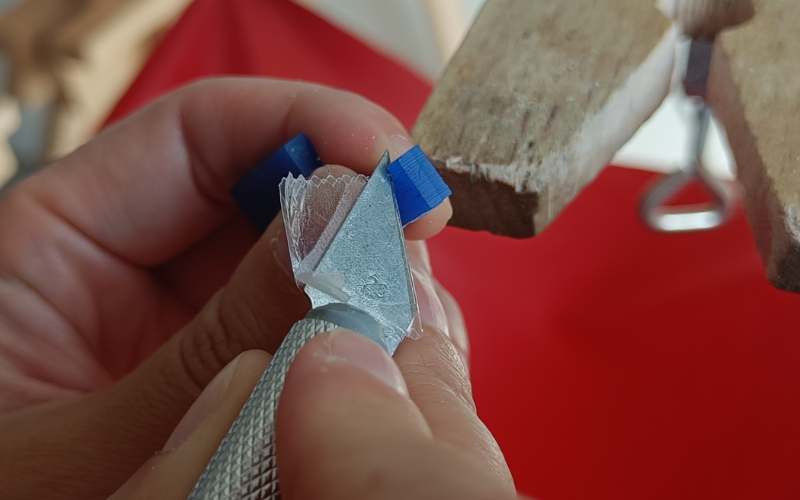
Again you feel it when the tape hits your piece and you’re reminded to angle your tool better.
Angle your piece
Instead of angling your tools, angle the piece. Hold your piece in a way that it’s angled away from the majority of your tool instead of right in its path.
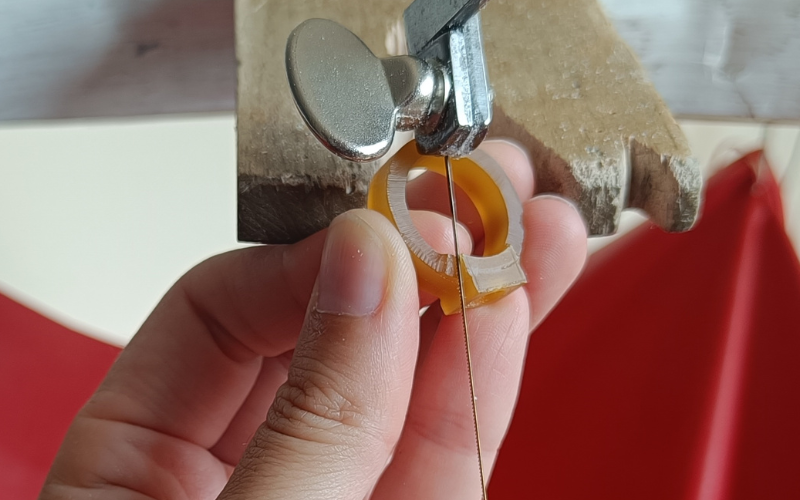
The chances of you accidentally damaging your piece decrease when there’s barely any wax under the tool! It’s a little more awkward to hold, but that’s a good thing in this case. You won’t forget why you’re holding your piece like this and will watch and make sure nothing gets accidentally damaged!
Use your thumb
Your thumb can take a little abuse from your tools. I’m not suggesting you actively pierce/slice/drill into it, that definitely hurts.
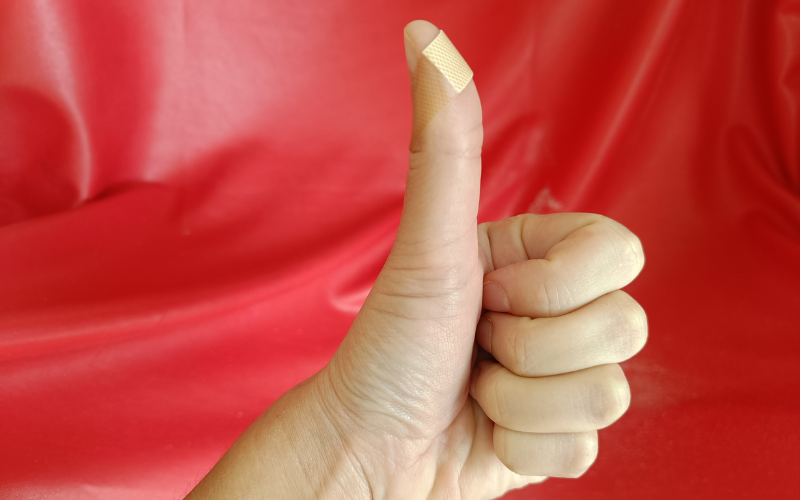
But it can take some abuse from the inactive parts of your tool.
Cover the part of your piece you don’t want to file with your thumb. It has enough padding that it can take your file bumping into it. This way you don’t accidentally file too much away.
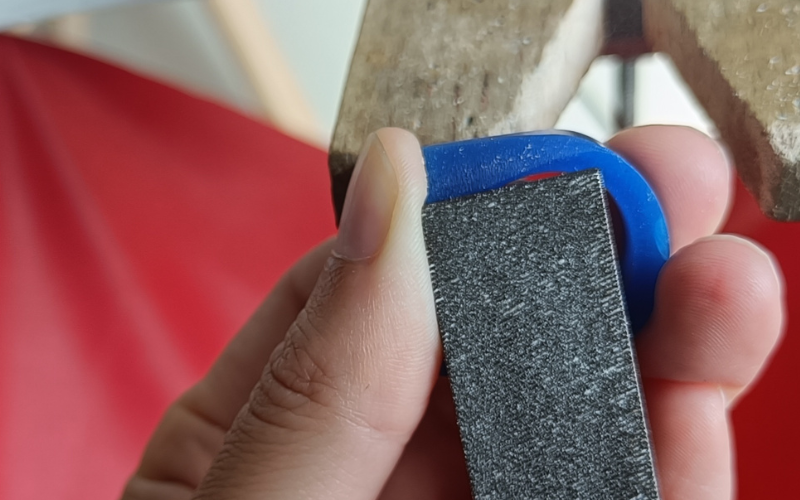
It can also guide your tools. By having it right next to the part you’re working on you can push the tool back if it starts to veer off course.
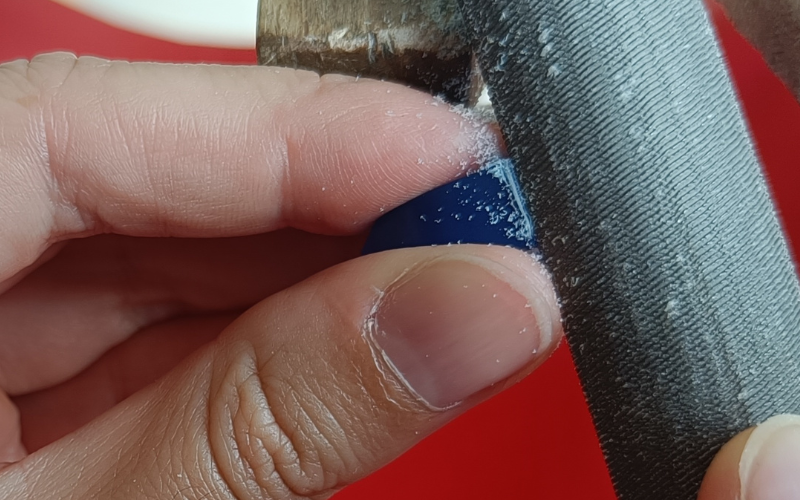
You can even place your thumb on the tool and actively guide it where you want it to go.
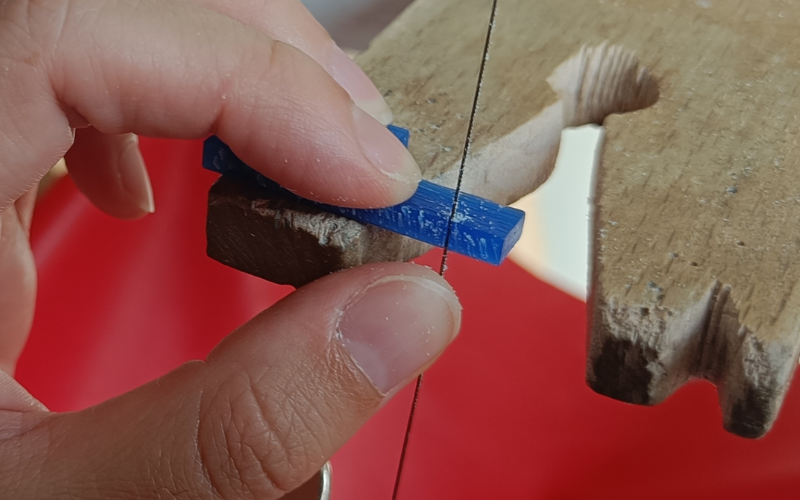
Your thumb is your best supporter!
Smaller tools
If you’re working on something extremely delicate you can use smaller tools. Some tools actually come in smaller versions like files. Others you can create yourself. Like a broken saw blade in a pin vice. No extra teeth to do damage anywhere!
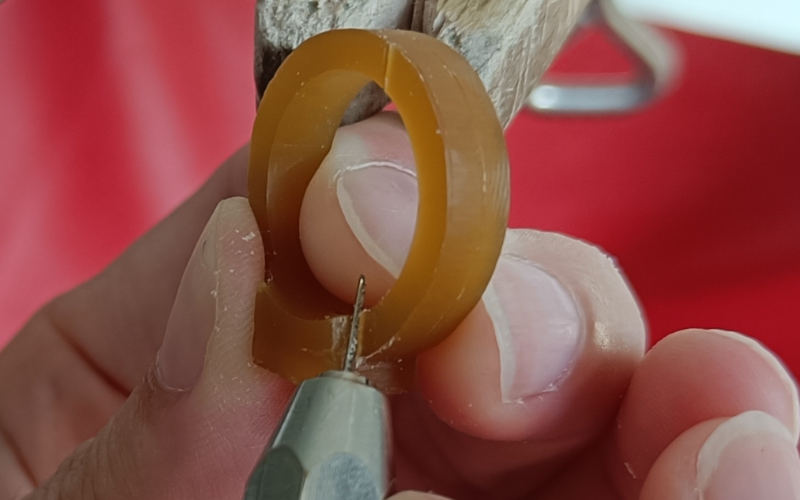
Or heat a carving tool in a flame. You can heat it so small and specifically that you don’t have an entire hot tool that can melt your piece.
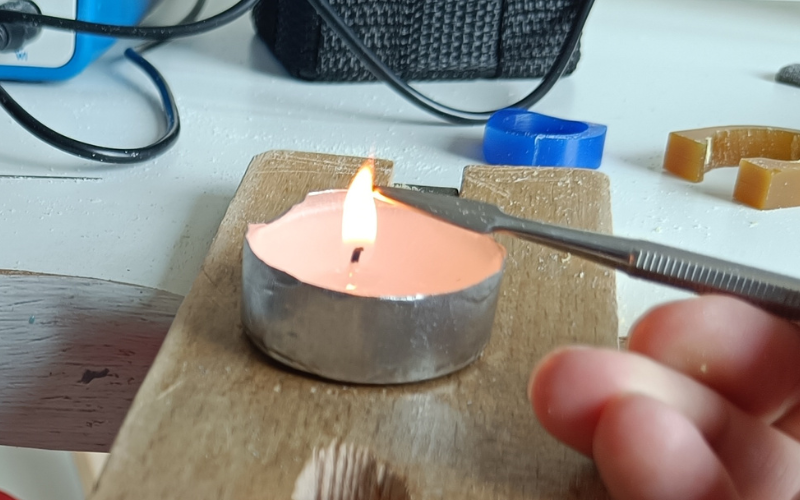
And sometimes it can help to use tools manually instead of electrical powered. A drill or ball burr in a pinvice can reduce the chances of accidental damage a lot!
Comment below and let me know if these tips were helpful!